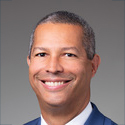The debate around the direction of global interest rates continues to shift, leading investors to wonder: What happens next? And how might central banks respond to a recession?
Although major central banks are at different points in their cycles, they appear to be on the same path to a peak and then an extended pause before they start their easing cycles. For example, the Bank of Canada may have hit its peak already; in the U.S., the Federal Reserve seems to be edging closer, as banking sector volatility dialed back expectations around future hikes; and the U.K. and Europe may have more hikes in store as their central banks try to manage renewed inflation .
But investors should not be looking for a return to the low rates they have come to expect in recent cycles. Markets are now aligned with Morgan Stanley Research’s view that the Fed’s upcoming hike on May 3 will be the last. However, we do not expect sudden and drastic cuts to follow, and rates are unlikely to go anywhere near zero, even if the U.S. economy tips into recession.
Understanding Previous Cycles
Although investors may have come to expect near-zero rates in recent cycles, a look further back shows that they are the exception, and the Fed has been more moderate previously. Consider the recession in 1991: The U.S. lost more than 1.5 million payroll jobs, which would be proportional to about 2.25 million in today’s larger labor market. During this cycle, the Fed cut rates aggressively, but only to 3%. The 2001 recession was similar, with job losses proportional to 2.5 million in today’s job market, and the Fed cut rates but stopped at 1%, not zero.
Since the Fed is trying to bring down inflation, we see very little chance of a policy move that takes the funds rate below the Fed’s best guess of neutral, even if the U.S. does fall into a recession. The good news: Given how tight the labor market is, any recession now is likely be milder than those in 1990 or 2001.
Furthermore, a Fed rate cut might not be the start of a cutting cycle. In 1995, the Fed did a “mid-cycle correction,” cutting rates by 75 basis points from spring 1995 to early 1996. But after about a year, the next move was a hike, not a cut. To the extent that the developing current credit squeeze goes too far, a similar recalibration by the Fed to maintain restraint but avoid a harsh recession is highly plausible.
A More Global Perspective
Unlike the U.S. case, in March, the United Kingdom and Europe showed signs of renewed inflation, which makes additional rate increases more likely.
Morgan Stanley Research sees a mild recession as the base case in the U.K. If anything, the Bank of England (BoE ) may hike further to avoid re-accelerating inflation. Indeed, the likelihood that a fiscal response would do the heavy lifting in a U.K. recession means that any easing from the BoE would be more measured.
We think the European Central Bank (ECB) is also willing to accept a recession to bring down inflation. In fact, even the forecast of a recession last winter did not deter the bank from hiking rates. The European market is pricing in our expected peak rate of 3.75%, but the risks are very likely skewed to more hiking given the stubbornness of inflation.





